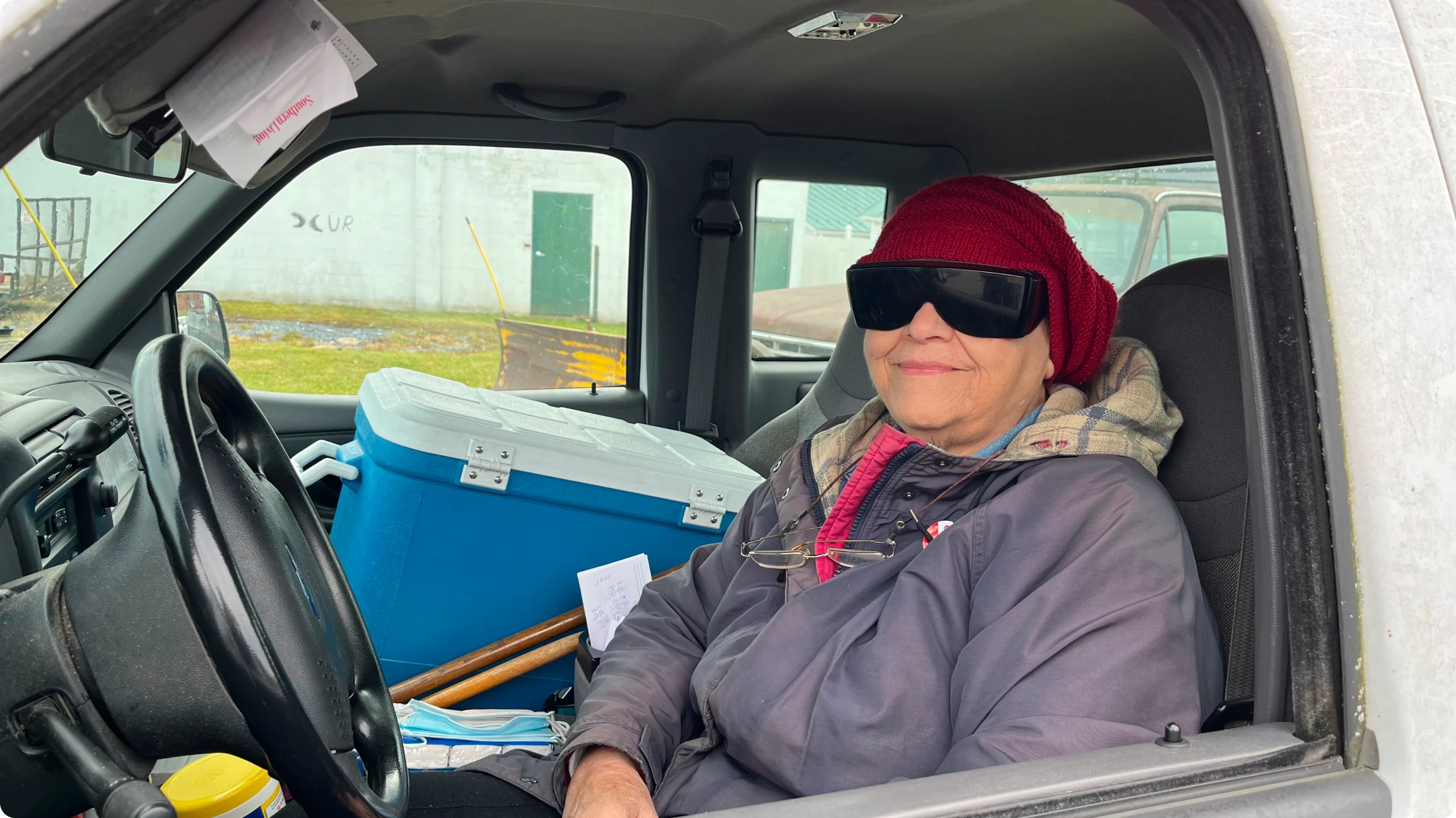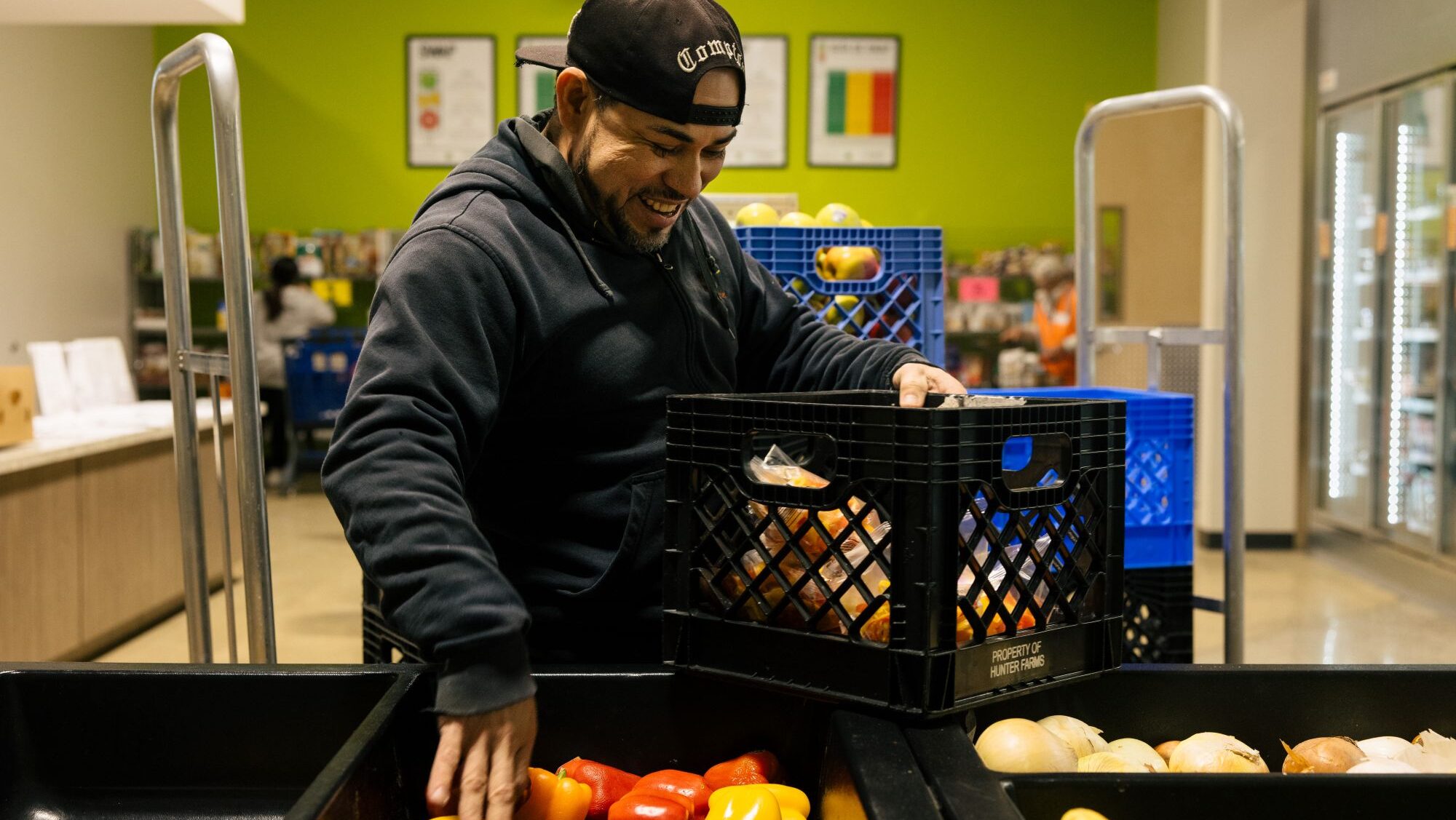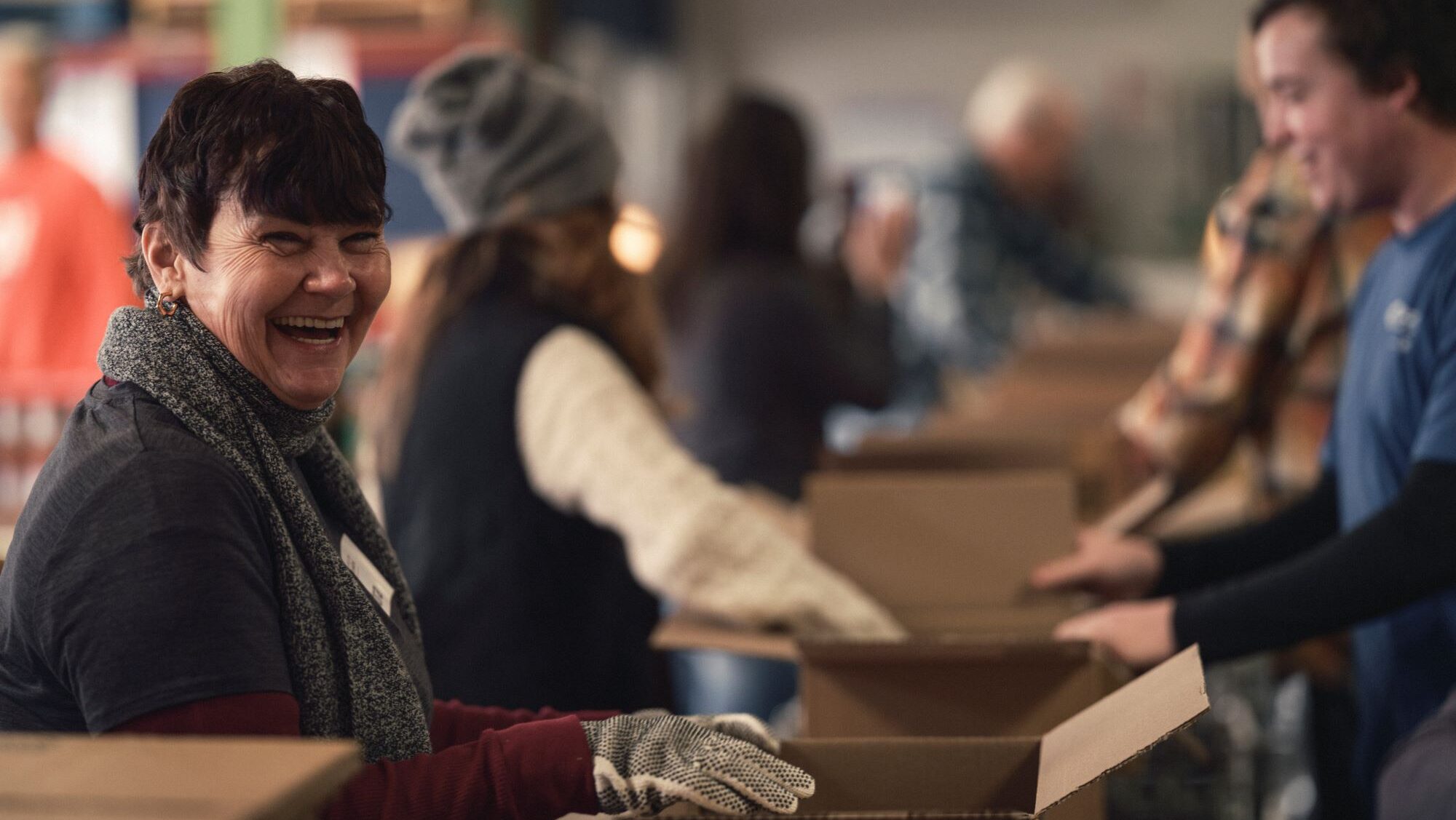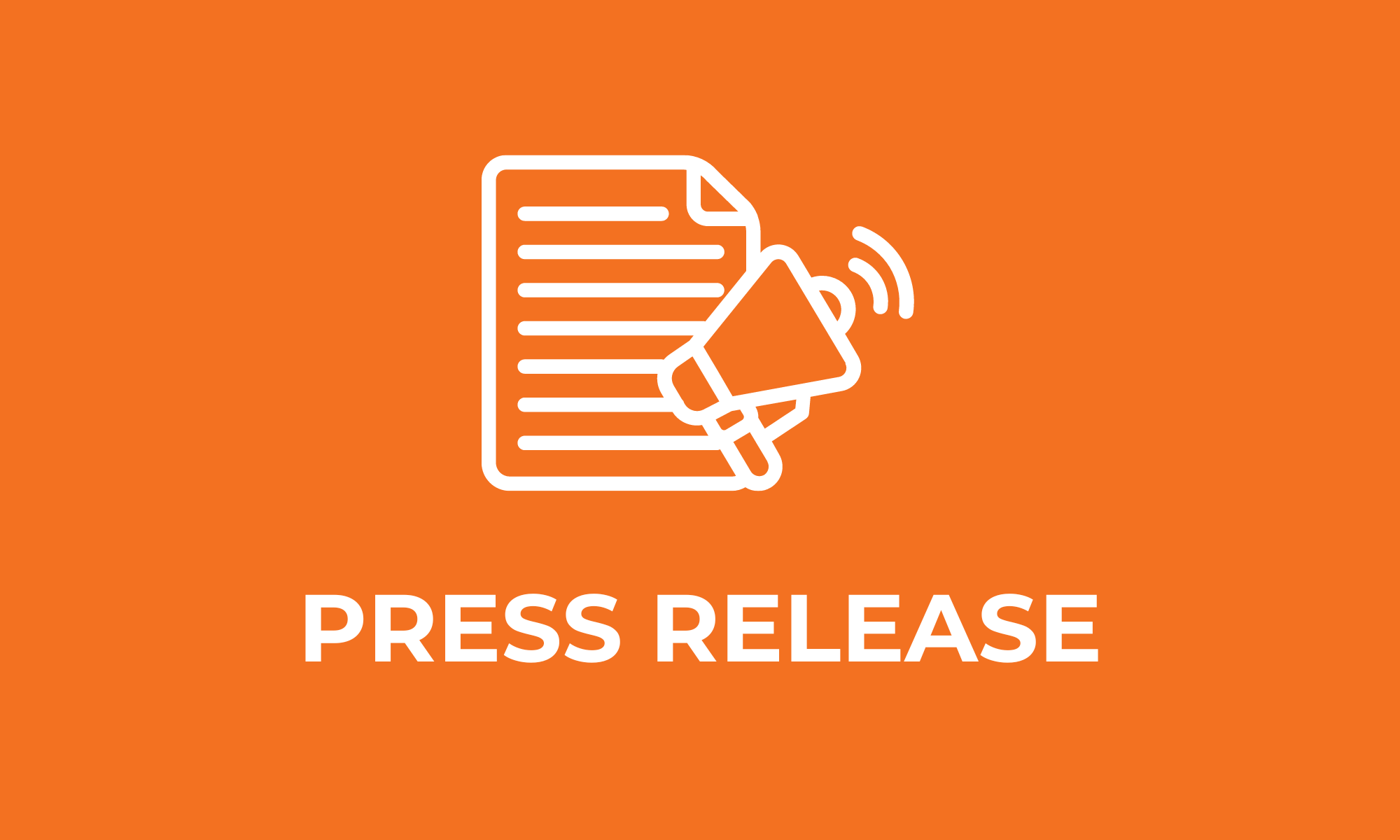The Blue Ridge Area Food Bank is forging ahead with its new strategic plan to eliminate disparities in access to nutritious foods, improve guests’ health, and connect guests to other resources that support food security. Developed with guests and partners, the plan’s success will rely on the input, support, and guidance of these groups and other community members as we move forward.
Our first strategic goal tackles the largest hurdle: eliminating the disparities in access to nutritious food. Put another way, we are focusing on ensuring that everyone, especially in underserved populations, who needs access to nutritious food can get access to nutritious food.
Overcoming barriers to access
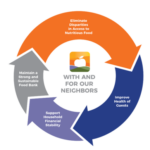
This strategic focus area is large and complex. Neighbors grapple with many barriers that intersect and compound, ultimately preventing some from accessing the support they need.
There are many reasons that people experiencing hunger may not visit a food pantry. Some are tangible challenges like transportation, pantry or program hours of operation, or an individual’s limited mobility. Others are less concrete but very real—such as stigma, language, concerns about food quality, and previous negative encounters.
Our task is to strengthen and diversify participation in our charitable food assistance network—which already has more than 400 community partners—through strategic investment, new partnerships, and innovative approaches. We partner with local schools, neighborhoods, community-based health clinics, hospital systems, neighborhood pantries, and community centers—all of whom work year-round to reach our neighbors, expand their choices, and improve their experiences.
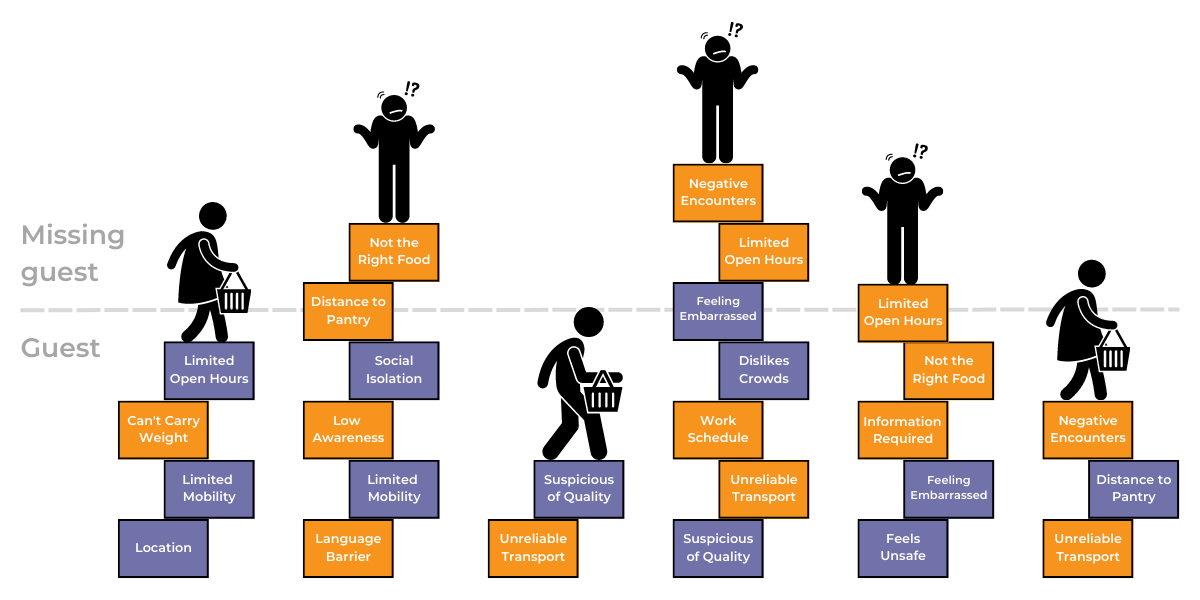
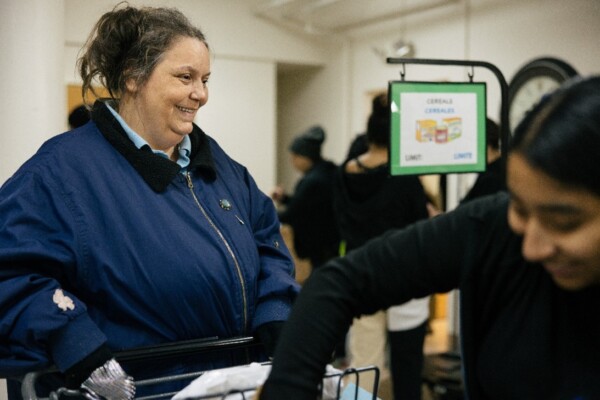
Relying on the kindness of others
Anne cannot drive for health reasons and relies on a friend to take her to the food pantry. If the friend is unable to bring her and wait, Anne and her family will not receive the services.
Transportation issues: Getting food from the pantry to the table
Many surveyed guests named lack of transportation as a key obstacle in getting to a food pantry. Lack of transportation could mean that the guest doesn’t have access to an automobile, the bus line doesn’t run close to a pantry, the location may be too far away to walk and carry groceries from, or the guest cannot afford the cost of the transportation to get to the pantry.
Similarly, a guest’s limited mobility or inability to carry the groceries may create physical barriers to access.
To help overcome transportation issues, we may need to recruit partners on existing bus routes or partners who can make home deliveries, as several do now.
We already run programs that address transportation barriers, like:
- Mobile Food Pantries (MFPs) are pop-up distribution sites. We load a refrigerated Food Bank truck with nutritious food, and send it to a convenient spot in an underserved area during a pre-announced date and time, supported by helpful volunteers.
- Neighborhood Produce Markets (NPM) resemble a farmer’s market. Fresh, free produce is available during the event to community members who may face food insecurity.
- Good Food School Markets (GFSM) are another way to get more food to the people who need it. With GFSMs, we bring food to children in school. They collect it and take it home for their families.
- Food Pharmacy works with chronically ill patients who screen positive for food insecurity . While getting medical care, clinically referred patients receive foods that meet their nutritional needs. Patients also receive nutrition education and referrals for other community food resources.
We are working with our partners and exploring innovative practices that will get people to where the nutritious food is or get the nutritious food to where the people are.
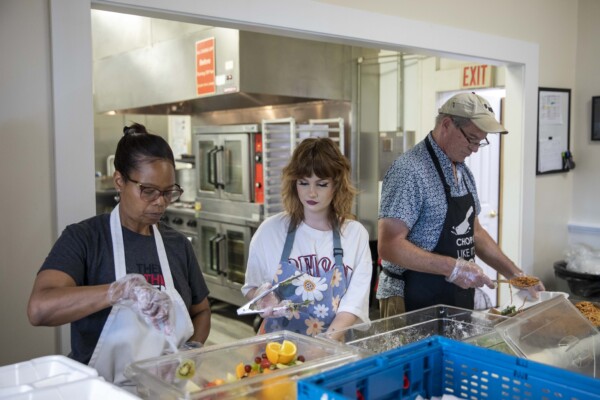
Hot meals, every day
Lynchburg Daily Bread serves hot meals every day of the year, including weekends and holidays. They have a dedicated team of volunteers and paid staff who help distribute food to guests.
Opening more doors more often
Pantry hours that don’t mesh with work or family schedules are a barrier for some guests in getting to their local pantry. At the same time, finding additional volunteers who can staff pantries on evenings or weekends is often a barrier for the pantries.
To make pantries more accessible, we aim to work with our network to recruit enough volunteers to perform all of the needed tasks at the needed times. And as volunteers retire from their dedicated positions, we will help shore up our network by recruiting new, energized volunteers. Some of these new volunteers may come to us from new and different partnerships across our region.
Language challenges
Language can be another barrier. Throughout our service area, some 50 languages are spoken! As guest communication is vital, we use translated printed materials, on-the-spot digital technology like Google Translate or pocket translators, or the rare multilingual volunteer or staff member. It’s crucial that everyone is understood.
Overcoming misperceptions: “If it’s free, there must be something wrong with it.”
Along with the very visible obstacles, there are also invisible roadblocks playing a part in disparities in food access. One of those is a common suspicion about food quality, despite the fact that the Food Bank follows strict quality guidelines to keep all donated and purchased food safe. The Food Bank and our partners share storage standards, inspection schedules, and a deep commitment to food safety mean that we are distributing high-quality produce, protein, and shelf-stable foods.
Food insecurity may come with embarrassment or shame around seeking help. Some people do not want to be recognized, are reluctant to be among crowds of people, or do not wish to share personal information. We work with our partners—as well as our guests—to develop durable and dignified ways to ease guest hesitation around seeking help. One approach includes pantries that set themselves up like grocery stores or farmers’ markets. Another is an order-ahead app that allows for quick, easy, and anonymous pickup.
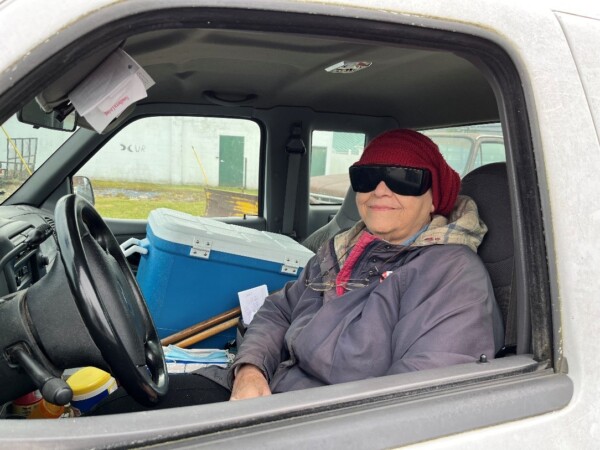
Food is hope AND health
Iris has diabetes and follows a strict diet to help keep her healthy. She logs her daily intake of food and really appreciates the low-sugar and low-salt items, when available.
“Food is nutritious only if it’s eaten.”
Maria Bowman, the Food Bank’s Director of Health Initiatives, repeats this often as we actively pursue new partnerships, new programs, and new approaches that reduce physical, structural, and emotional barriers and that increase the availability of high-quality, healthful, and desirable food.
Our commitment to better understanding and eliminating disparities in access to nutritious food across our 12,000-square-mile service area will require a robust investment of resources and creativity. We are so thankful to our community members who continue to give, to volunteer, and to champion our work across our region. Your continued generosity fulfills our shared vision of “Nourishing food and better health for everyone, every day.”
Visit this site if you need help finding free groceries.
Watch our CEO Forum on “Missing Guests” research.
 Chew On This
Chew On This
